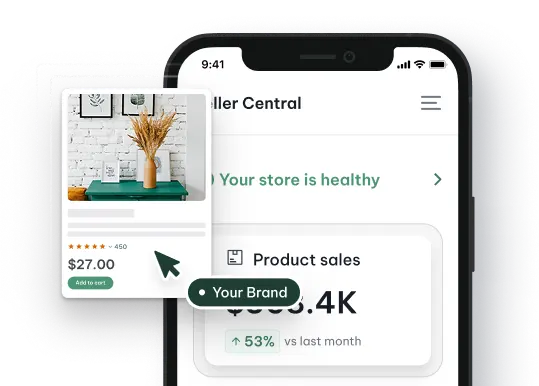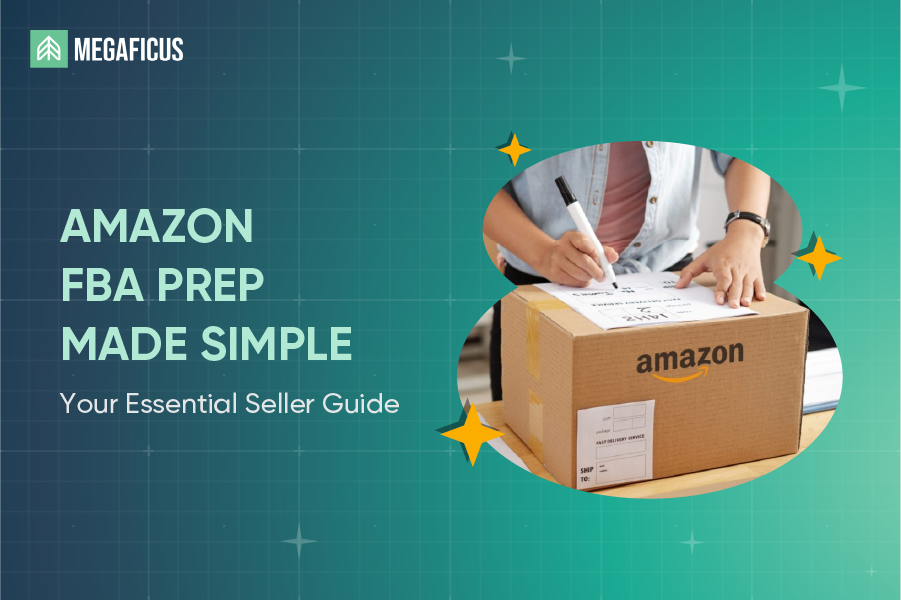Want to sell on Amazon FBA but unsure where to start? In this article, Megaficus will guide you through every critical requirement, from account registration to compliance certifications, helping you avoid rejections and costly mistakes.
Quick summary:
Essential FBA Requirements checklist:
| Requirement | Must Have |
|---|---|
| Seller Account | Valid ID, bank statement (90 days), credit card, tax ID |
| Product | Images: white background (RGB 255,255,255), 1000px min |
| Packaging & Labeling | Corrugated boxes, FNSKU barcode on every unit |
| Shipment & Delivery | 24-hour advance appointment, tracking number, BOL documentation |
| Storage & Inventory | IPI score ≥400, monitor capacity limits |
| Compliance & Legal | CPC (children), GCC (consumer), FCC/UL (electronics), ISO 17025 |
What Are Amazon FBA Requirements?
Amazon FBA requirements are mandatory standards that sellers must meet to list, store, and ship products through Amazon’s fulfillment network. These requirements cover seller account registration, product listing standards, packaging and labeling specifications, shipping protocols, inventory storage limits, and legal compliance certifications.
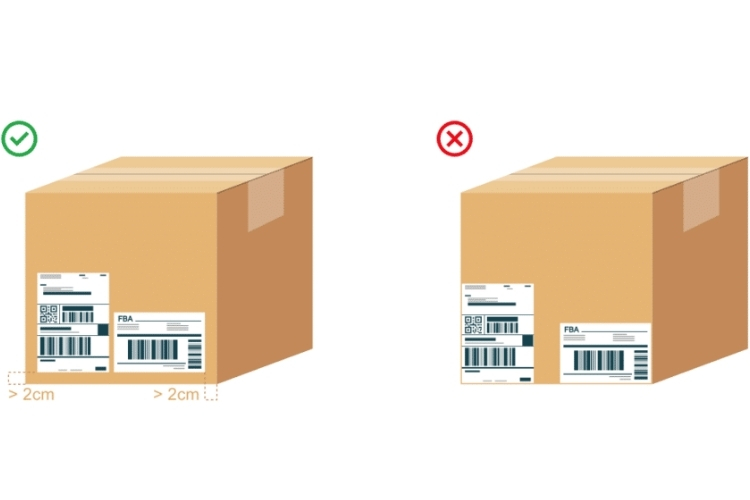
6 Amazon FBA Requirements You Need to Follow
To successfully sell on Amazon FBA, you need to understand and comply with 6 core requirement categories that cover everything from initial account setup to ongoing legal compliance.
Seller Account Requirements
Before starting with Amazon FBA, prepare all necessary documents and choose the right account type for smooth registration:
- Documents Required: Before registering as an Amazon seller, you need to prepare several essential documents and information to complete the verification process:
- Valid government-issued ID: A passport, driver’s license, or national ID card for identity verification.
- Bank account statement or credit card statement: Must show your name and address, issued within the last 90 days.
- Chargeable credit card: An internationally accepted credit card (Visa, Mastercard, American Express) for monthly seller fees.
- Bank account for payments: A valid bank account where Amazon can deposit your sales proceeds.
- Tax information: Your tax identification number (SSN, EIN, or equivalent), depending on your country and business structure.
- Valid phone number: A working phone number for account verification and two-factor authentication.
- Business information: Company registration documents if selling as a business entity (not required for individual sellers).
- Proof of address: A recent utility bill, bank statement, or official document showing your current address.
- Email address: A unique email address not associated with any other Amazon account.
- Note: All documents must be clear, valid, and match the information you provide during registration. Amazon may request additional documentation during the verification process to ensure account security and compliance.
- Account Type: Choose between Individual Plan ($0.99 per sale) for casual sellers or Professional Plan ($39.99/month) for serious sellers with higher volume.
- Eligible Regions: Ensure your country is eligible to sell on Amazon’s marketplaces (US, UK, EU, Canada, Japan, etc.).
- Business Structure: Register as an individual, sole proprietor, LLC, corporation, or partnership, depending on your business needs.
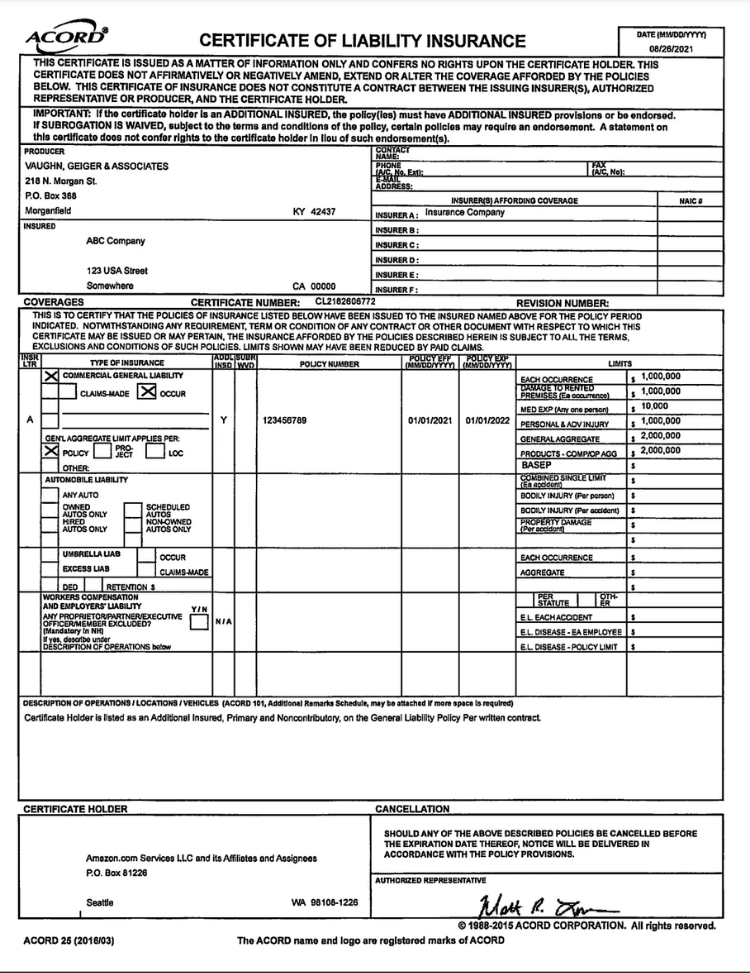
Product Requirements
Amazon enforces strict standards for product images, titles, bullet points, and descriptions to ensure quality listings and improve customer shopping experience.
Product Image Requirements
Your product images must be high-quality and accurately represent your items while meeting Amazon’s specific technical standards:
- Main image specifications: Must have a pure white background (RGB 255, 255, 255), with product filling at least 85% of the frame.
- Image quality: Minimum 1000 pixels on longest side for zoom function; 1600+ pixels recommended for best quality.
- No graphics or text: Main image cannot include logos, watermarks, borders, promotional text, or multiple views.
- Professional photography: Images must be clear, well-lit, and show the actual product being sold.
- Additional images: Up to 8 additional images showing different angles, features, usage, and product dimensions.
- Prohibited elements: No nudity, drugs, graphic content, or images that mislead customers.

Product Title Guidelines
Your product title is crucial for search visibility and customer decision-making, so it must follow Amazon’s formatting rules:
- Character limits: Maximum 200 characters, though 80-150 is recommended for better readability and mobile display.
- Title structure: Include Brand + Key Feature + Product Type + Size/Quantity (e.g., “Sony Noise Cancelling Headphones WH1000XM4 Wireless Bluetooth Over Ear”).
- Capitalization rules: Capitalize first letter of each word except prepositions, conjunctions, and articles (and, or, with, the).
- What to avoid: No promotional phrases (“free shipping”, “best seller”), special characters (★, ®, ™ allowed only), ALL CAPS, or seller information.
- Keywords placement: Include relevant search terms naturally without keyword stuffing.
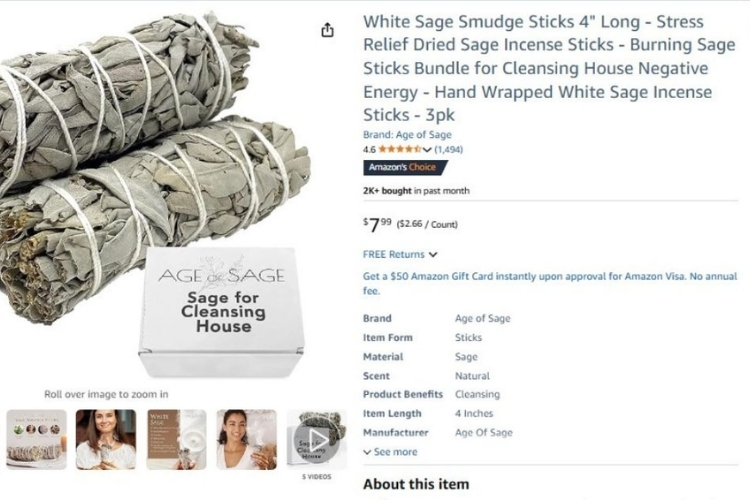
Bullet Point Guidelines
Bullet points highlight your product’s key features and benefits, helping customers make informed purchase decisions:
- Number of bullet points: 5-6 bullet points recommended; focus on key features and benefits.
- Character limit: Maximum 500 characters per bullet point, but 200-250 characters is optimal for readability.
- Content focus: Highlight product features, dimensions, materials, uses, and benefits rather than promotional claims.
- Formatting: Start each bullet with a capital letter; use semicolons to separate thoughts within bullets.
- What to include: Key features, compatibility, technical specifications, included items, and usage instructions.
- What to avoid: No pricing information, shipping details, promotional language, or company contact information.
>>> Read more: Amazon Listing Optimization: 7 Strategies to Boost Sales
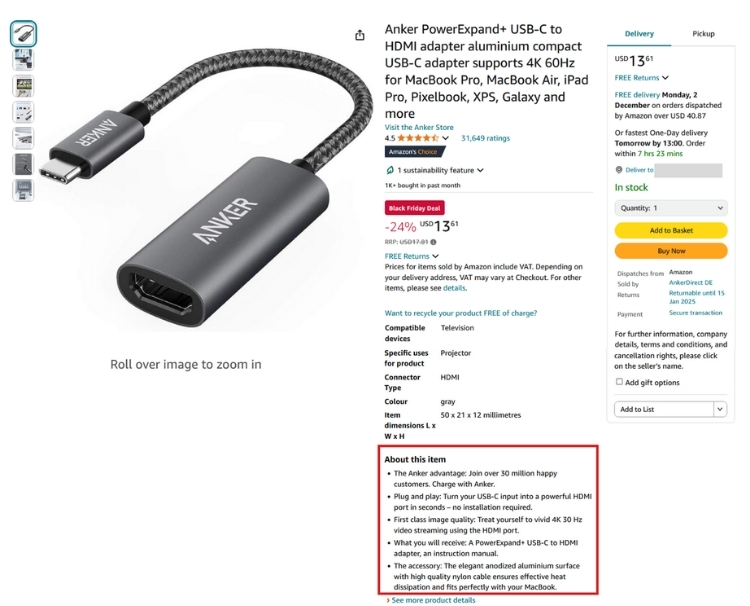
Product Description Guidelines
The product description provides detailed information that complements your title and bullet points:
- Character limit: Maximum 2,000 characters; use this space to expand on bullet points with detailed information.
- Structure and formatting: Use paragraphs to organize information; HTML formatting allowed for enhanced readability.
- Content requirements: Provide comprehensive product details, materials, dimensions, care instructions, and usage information.
- Brand storytelling: Opportunity to share brand values, product development story, and what makes your product unique.
- Keywords integration: Naturally incorporate relevant search terms throughout the description for SEO purposes.
- What to exclude: No seller information, promotional language, time-sensitive claims, contact details, or external links
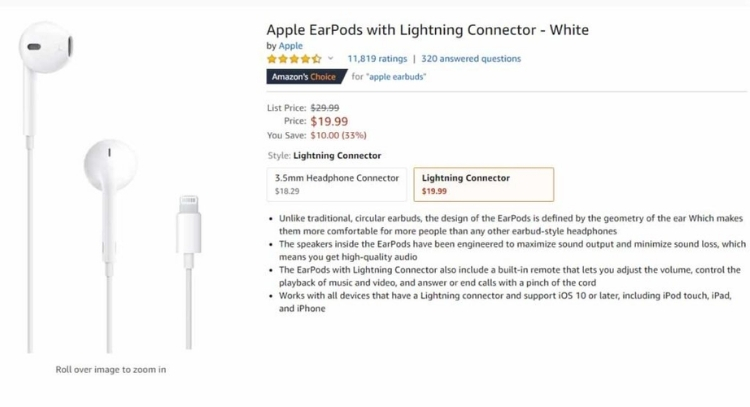
Packaging & Labeling Requirements
Proper packaging and labeling are critical for ensuring your products are safely stored, efficiently processed, and correctly tracked throughout Amazon’s fulfillment network.
Packaging Requirements
Amazon has specific packaging standards to ensure products are safely stored and shipped through fulfillment centers:
- Box specifications: Maximum 25 inches per side and 50 lbs weight; boxes over 50 lbs require “Team Lift” label, over 100 lbs need “Mechanical Lift” label.
- Box materials: Strong corrugated cardboard boxes sealed with the H-pattern taping method.
- Approved fillers: Bubble wrap, foam, air pillows, full paper sheets; prohibited materials include styrofoam peanuts, biodegradable fillers, crinkle wrap, and shredded paper.
- Liquid products: Must be double-sealed or polybagged; products over 16 oz require polybagging.
- Expiration dates: Minimum 105 days shelf life upon arrival, with dates clearly visible.
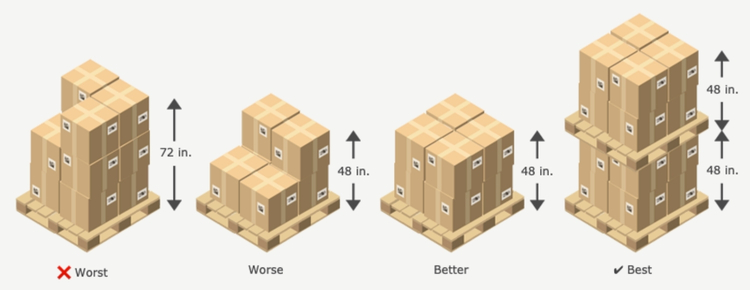
Labeling Requirements
Specific labeling standards ensure your products are correctly identified, tracked, and linked to your seller account throughout the fulfillment process:
- FNSKU barcode requirement: Each product must have a unique FNSKU label that Amazon assigns to identify and track your inventory.
- Label size: Recommended sizes are 3.75″×1″ or 2.63″×1″; minimum 1″×2-5/8″ for FNSKU barcodes.
- Label quality: Print with high-quality laser printers to ensure clear, scannable labels.
- Label placement: Place barcodes on flat surfaces (not edges, seams, or corners), free from obstructions like tape or bubble wrap.
- Cover existing barcodes: Must cover all manufacturer barcodes (UPC/EAN) to prevent scanning errors.
- Single barcode visibility: Only one barcode (FNSKU or UPC) should be visible to avoid scanning errors and stranded inventory.
- Shipping box labels: Each box must have a unique FBA shipment ID and carrier label on flat surfaces.
- Label content: Include FNSKU barcode, product title, and condition (New, Used).
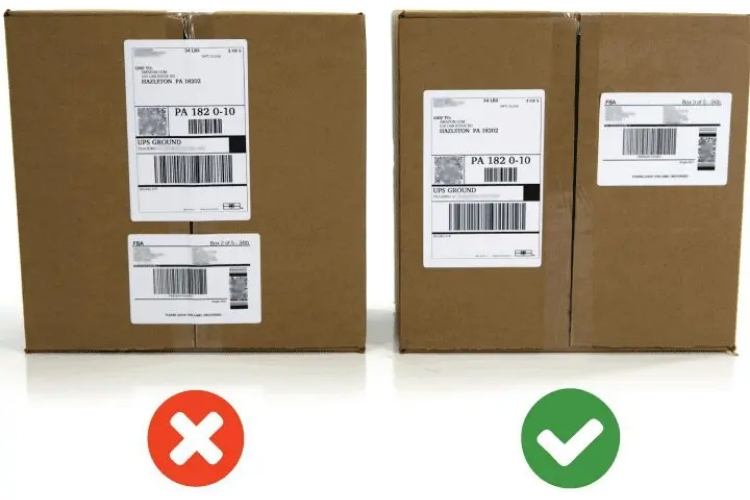
Shipment & Delivery Requirements
Amazon has specific shipment creation and delivery requirements to ensure efficient processing at fulfillment centers and maintain smooth FBA operations.
Shipment Creation & Planning
Sellers must use Amazon Seller Central to create FBA shipments, which includes selecting products, determining shipping methods and carriers, and specifying quantities:
- Shipment workflow: Follow Amazon’s “Send to Amazon” workflow to create shipping plans, where Amazon assigns destination fulfillment center(s) based on your inventory.
- Shipping method selection: Choose Small Parcel Delivery (SPD) for smaller shipments via UPS, FedEx, or DHL, or Less Than Truckload (LTL) and Full Truckload (FTL) for larger pallet shipments.
- Partnered carrier benefits: Use Amazon’s Partnered Carrier program when available for discounted shipping rates and streamlined processing.
- Tracking information: Provide tracking information through Seller Central and monitor shipments until received at the fulfillment center.
- Shipment commitment: Once approved, you must follow through with the shipment plan or risk suspension of delivery and selling rights.
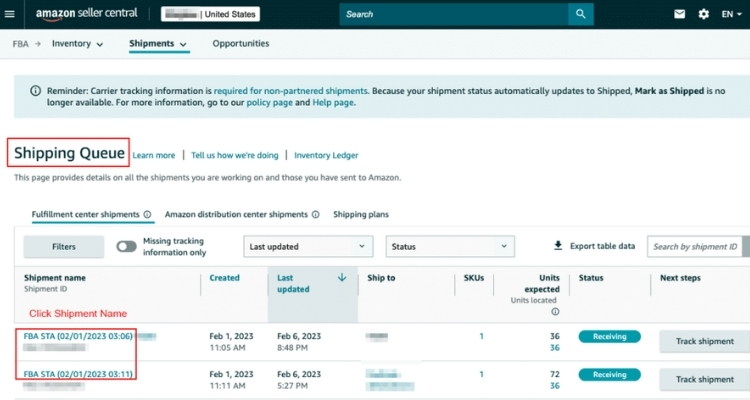
Delivery Appointment Requirements
All carriers must schedule delivery appointments at least 24 hours in advance through Amazon’s Carrier Central portal:
- Appointment scheduling: Register with Amazon and use Carrier Central to request appointments; confirmation provided within 24 hours based on availability.
- Required documentation: Provide Amazon Shipment ID, Reference ID (ARN), PRO tracking numbers, and box/pallet counts on the Bill of Lading (BOL).
- Missed appointment policy: Shipments arriving 30+ minutes late will be refused and require a new appointment request.
- Professional carriers only: Amazon accepts registered professional carriers exclusively, not public deliveries.
- Weather delays: Notify Amazon of weather-related delays for schedule adjustments based on availability.
- Full Container Load (FCL): Requires specific appointments as unloading takes approximately two hours.
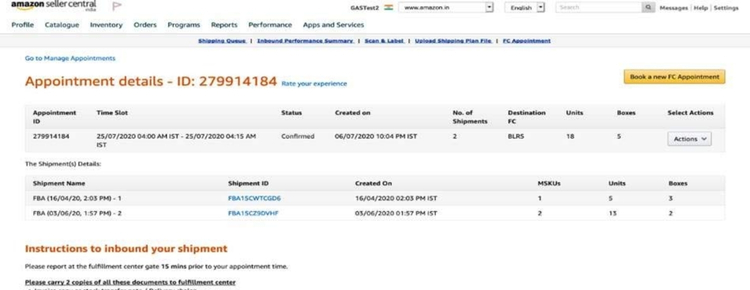
Storage & Inventory Requirements
Amazon implements FBA capacity limits and storage requirements to manage warehouse space effectively and ensure optimal inventory turnover across all sellers:
Capacity Limits
In March 2023, the previous Storage Volume Limit and Restock Limit were replaced with a single monthly Capacity Limit, measured in cubic feet rather than units:
- Monthly capacity system: Capacity limits are released during the fourth week of each month with confirmed, estimated, and preliminary forecasts.
- Account-based limits: Individual sellers are limited to 15 cubic feet; new professional sellers have no limits for 39 weeks.
- IPI threshold: Maintain an IPI score ≥400 to avoid storage restrictions; lower scores result in severely capped capacity.
- Capacity calculation: Based on IPI score, sales volume, product type, warehouse availability, and inventory levels.
- Sales-based allocation: Limits reflect approximately 5 months of expected sales volume.
- Additional capacity: Request up to 20% more or 2,000 cubic feet (whichever is greater) via Capacity Manager with a reservation fee.
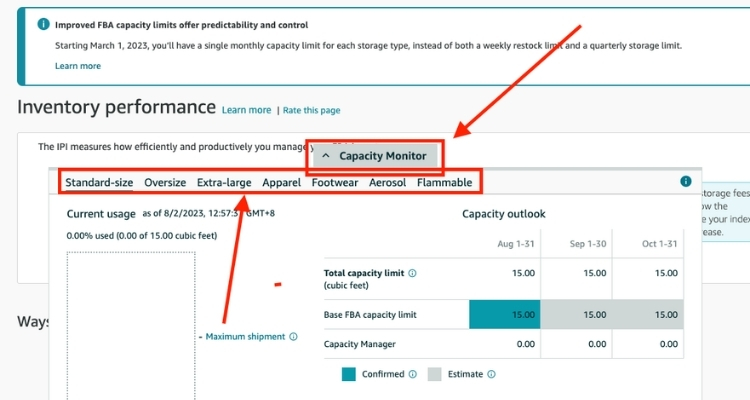
Storage Fees
Amazon charges monthly storage fees based on cubic feet occupied, with rates varying by product size, time of year, and inventory age:
- Monthly storage rates: Standard storage fees are $0.78 per cubic foot from January through September, and $2.40 per cubic foot during peak season (October through December).
- Aged inventory surcharge: Starting at 181 days of storage, fees increase progressively: 181-270 days at standard rates, 271-365 days at $1.50 per cubic foot, and 365+ days at $6.90 per cubic foot or $0.15 per unit (whichever is greater).
- Storage utilization surcharge: Starting April 2025, professional sellers with a storage utilization ratio above 22-26 weeks face additional surcharges ranging from $0.30 to $0.94 per cubic foot, depending on overstocking levels.
- Fee assessment timing: Monthly storage fees are charged between the 7th and 15th of each month, while aged inventory surcharges are assessed on the 15th and charged between the 18th and 22nd.
- IPI score impact: IPI is calculated based on excess units, sell-through rate, stranded inventory, and in-stock rate, with high scores providing more storage capacity and avoiding additional restrictions.
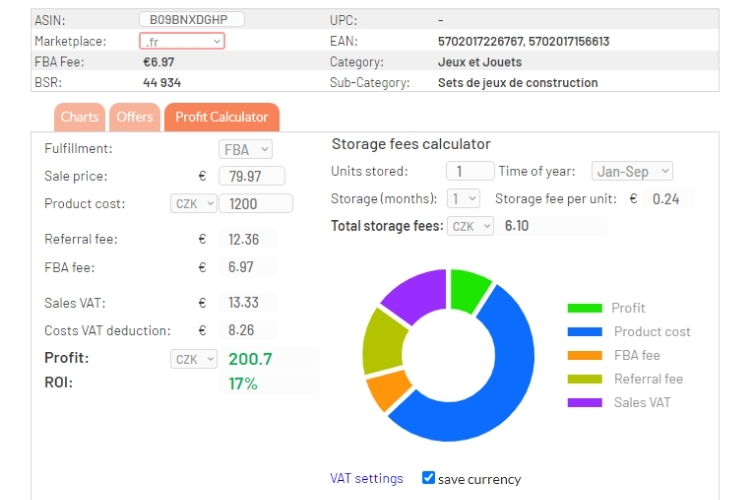
>>> Read more: Amazon FBA Fees: Complete Guide To All Costs & How To Save
Compliance & Legal Requirements
All products require proper safety certifications and legal documentation, depending on category and marketplace location.
Product Safety & Certifications
Products must meet safety standards based on where they’re sold, with third-party lab testing required to verify compliance:
- Children’s Product Certificate (CPC): Required for children’s products, including product details, safety regulations, testing information, manufacturer contacts, and third-party lab details.
- General Certificate of Conformity (GCC): Required for consumer products to certify safety compliance, including product details, regulations, testing info, and manufacturer information.
- CPSC testing: Children’s products must comply with CPSIA, require CPSC-accepted lab testing, tracking labels, and may need ASTM F963 certification.
- ISO 17025 test reports: Required for dietary supplements, electronics, and regulated products from accredited laboratories.
- NRTL certifications: Nationally Recognized Testing Laboratory documentation is required for certain products with safety standards verification.
- Electronics compliance: Must meet UL standards (UL 2054 for batteries, UL 60950-1 for chargers) and FCC compliance for radio frequency devices.
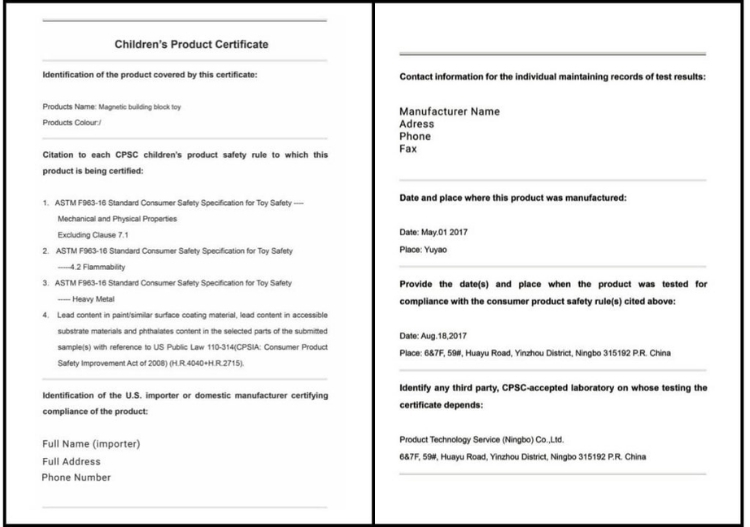
Documentation Management
Amazon may request compliance documentation anytime; sellers must respond promptly to avoid listing removal or suspension:
- Compliance markings: Products must display required markings like tracking labels for children’s items and FCC markings for electronics.
- Product manuals: Must include safety statements, hazard warnings, compliance markings, and clear usage instructions.
- Response deadline: Respond within 7 days to compliance notices or Amazon will remove listings and dispose of inventory.
- Manage Your Compliance: Submit documents and appeals through Seller Central with bulk capabilities for up to 5,000 ASINs.
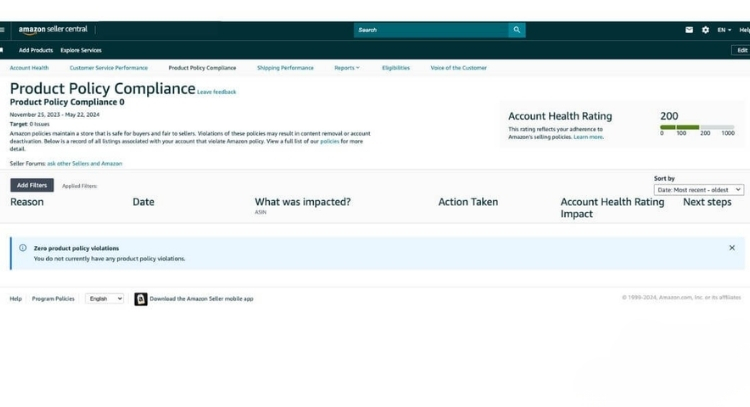
Penalties & Updates
2025 compliance rules are stricter with advanced monitoring and immediate penalties:
- Account Health Rating: Scores below 100 on the 0-1,000 scale result in immediate deactivation.
- Listing violations: Non-compliant titles and formatting can lead to fines up to $50,120 per instance.
- Reimbursement changes: Starting March 31, 2025, reimbursements based on manufacturing costs, requiring detailed documentation.
- Non-compliance consequences: Listing removal, blocked ASINs, FBA eligibility loss, account suspension, or funds held 90+ days.

Common Mistakes New Sellers Usually Make When Starting with Amazon
Megaficus recommends paying close attention to these three common mistakes that new FBA sellers often overlook, which can lead to significant financial losses and account issues.
Underestimating Amazon FBA Costs
Many new sellers fail to account for the full range of Amazon FBA fees, which can quickly erode profit margins. For example, you might price a product at $25 expecting $10 profit, but after deducting the 15% referral fee ($3.75), FBA fulfillment fee ($4-6), and monthly storage costs, your actual profit drops to just $2-3 per unit.
To avoid this mistake, you should use Amazon’s FBA Revenue Calculator before listing and ensure at least a 30% profit margin.
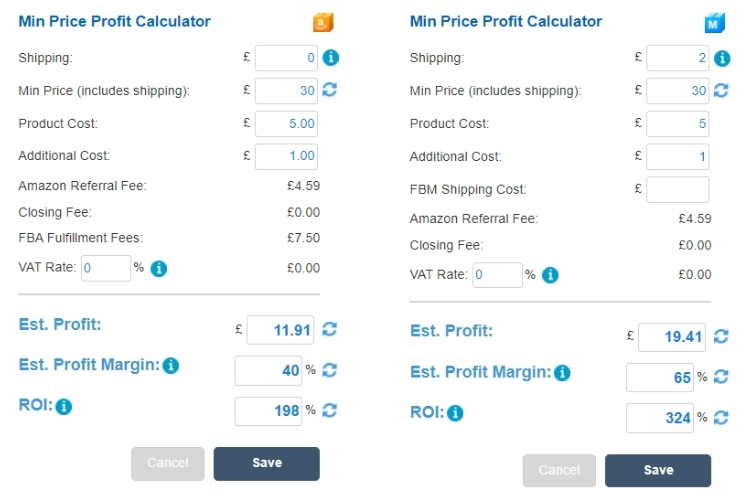
Poor Inventory Management
Sellers often send either too much or too little inventory, which causes stockouts that kill Buy Box eligibility or overstocking that leads to costly storage fees. If you send 500 units of an untested product but only sell 50 monthly, you will pay storage fees on 450 idle units while they accumulate aged inventory surcharges.
You should start with 20 units for new products to test demand, then scale using Amazon’s 90-day planning model.
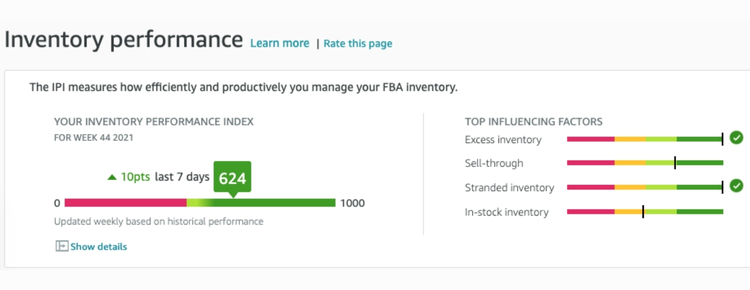
Ignoring Packaging and Prep Requirements
Amazon has strict packaging and labeling requirements, and violations lead to delays, extra fees, or rejected shipments. If you send 100 units with incorrect FNSKU labeling, Amazon will reject the entire shipment and charge you $50 in return fees, which means you also lose selling time.
Sellers can eliminate these costly reprocessing fees and prevent inventory delays by carefully reviewing Amazon’s FBA prep guidelines and verifying each shipment before dispatch.

Tips To Stay Compliant and Avoid Account Suspension
Maintaining account health and staying compliant with Amazon’s policies requires proactive monitoring and adherence to platform guidelines.
Monitor Your Account Health Dashboard Regularly
Amazon outlines several critical performance indicators that sellers need to meet: Order Defect Rate (ODR) must stay below 1%, Late Shipment Rate (LSR) under 4%, Pre-fulfillment Cancel Rate not exceeding 2.5%, and Valid Tracking Rate (VTR) at least 95%.
By keeping performance metrics in check, sellers remain compliant with Amazon’s rigorous standards and can catch issues before Amazon flags them.
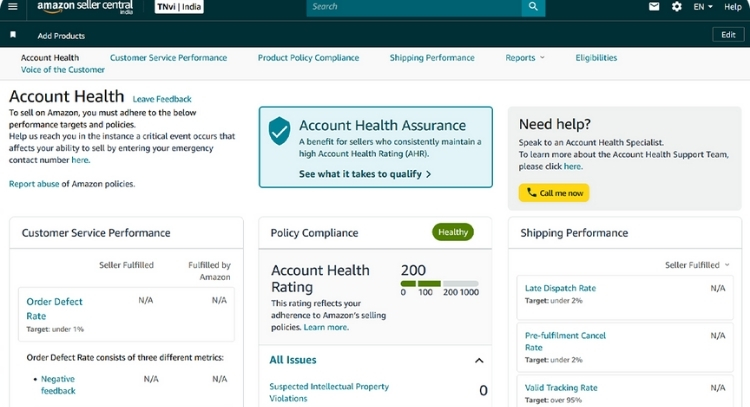
>>> Read more: The Strategic Guide for Amazon Account Health Management
Keep All Compliance Documentation Updated
In addition to monitoring metrics, Amazon’s AI now auto-flags documentation gaps, which means missing or expired compliance documents like safety certificates, brand authorizations, or invoices may result in instant listing suppression or account suspension.
To prevent this, sellers should upload and maintain all compliance documents in the “Manage Your Compliance” hub, back up certifications, and renew them early before expiration.
Furthermore, accurate business documentation must meet regulatory standards, such as Certificate of Analysis (COA) compliance, and sellers should verify that testing labs are legitimate with proper documentation.

Stay Informed On Policy Updates and Respond Immediately
Beyond documentation management, Amazon frequently updates its policies, and staying informed is crucial for compliance as policy violations can lead to sudden suspensions without warning. When notifications arrive, sellers should respond immediately to any performance, safety, or policy alerts, as delays can escalate minor issues into serious violations.
More importantly, under Amazon’s repeat violation policy, violating the same policy two or more times within 180 days can drop your Account Health Rating to zero and put your account at immediate risk of suspension, regardless of overall performance.
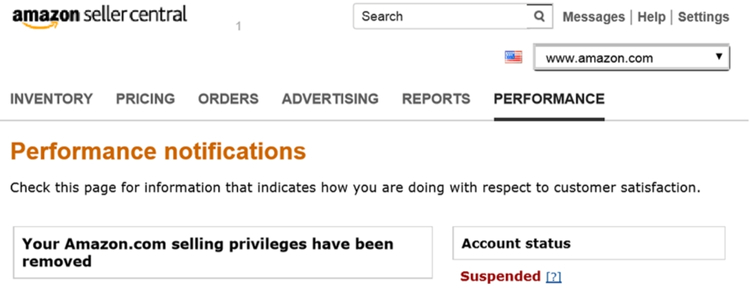
FAQs About Amazon FBA Requirements
Yes. Amazon rejects non-compliant inventory and returns it at your expense ($0.50 per unit). Common reasons include incorrect labels, prohibited materials, oversized boxes, or missing documentation.
Review FBA prep guidelines in Seller Central before shipping. Use FNSKU labels on flat surfaces, keep boxes under 25 inches/50 lbs, use approved materials (no packing peanuts), and cover existing barcodes.
Yes. Requirements vary by marketplace. Weight limits, compliance certifications (CE for EU, FCC for US), and delivery procedures differ between regions and fulfillment centers.
Yes. Third-party FBA prep services and 3PL providers handle labeling, packaging, and compliance for you. Amazon’s FBA Prep Service is ending in January 2026 in the US.
Get Professional Help from Megaficus
Understanding and following Amazon FBA requirements is crucial for avoiding rejections, fees, and account suspensions. By staying compliant with these seven core standards, you can build a successful and sustainable FBA business.
Need expert help with Amazon FBA compliance and business growth? Contact Megaficus today for comprehensive guidance on meeting requirements and optimizing your selling strategy.


